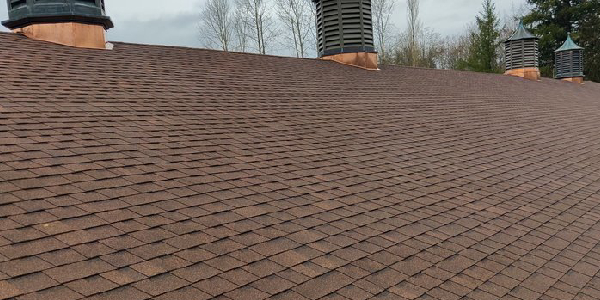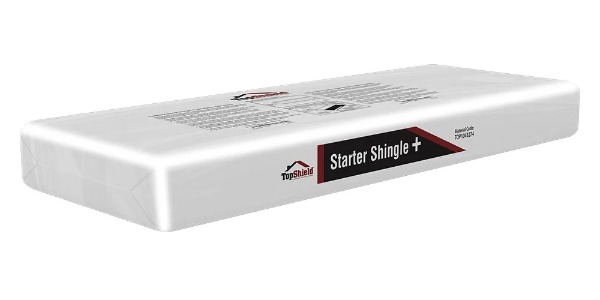The power of an impact-resistant shingle

By Lori Jerome, marketing manager, PABCO Roofing.
Learn how impact-resistant shingles can protect a home, save insurance money and make code-compliance a little easier.
Hail and high wind events are becoming increasingly common and are a big concern for homeowners and contractors when it comes to protecting homes. One of the best tools against these types of dangers and damage is the type of shingle on the roof. Impact-resistant shingles are designed for this as they are built to withstand harsh conditions. Depending on the severity of the conditions around the building, you might want to consider a Class 3 or a Class 4 impact-resistant shingle. Understanding the difference between these and being able to choose the right shingle is key to enhancing a home’s durability. It might even save the homeowner a bit of money on insurance costs and help ensure that the project is well within compliance of local building codes. This article from PABCO Roofing can help you get started with the basics!
Understanding Class 3 and Class 4 shingles
Impact-resistant shingles are rated by their ability to withstand impacts without sustaining damage, and these ratings are classified as Class 3 or Class 4. The primary difference between Class 3 and Class 4 shingles lies in the testing methods and the impact they can endure. Class 4 shingles are tested with a larger and heavier steel ball dropped from a greater height compared to Class 3 shingles, making them more resistant to severe impacts.
How testing is done
The testing process for Class 3 and Class 4 shingles involves rigorous procedures to simulate real-world impact conditions. At PABCO, shingle samples are sent to UL in Northbrook, Illinois, where they are mounted on three-by-three boards and conditioned at 140 degrees for 16 hours. This conditioning mimics the effects of heat exposure on a roof. For Class 4 shingles, a 2-inch steel ball is dropped multiple times from a greater height, while for Class 3 shingles, a 1.75-inch ball is also dropped multiple times but from a slightly lower height. Each board undergoes these drops at different locations. Shingles must show no cracking on the back and minimal granule loss on the surface to pass the test, ensuring their durability and performance under severe conditions.
Why are there different classes per UL?
The classification into Class 3 and Class 4 by UL (Underwriters Laboratories) is based on the different levels of impact resistance that shingles can provide. These classifications help homeowners and contractors make informed decisions about the type of shingles that best suit their needs and regional requirements. The different classes ensure that there are options available for varying levels of protection, allowing for flexibility in meeting specific building codes and insurance requirements.
Cost considerations
Class 4 shingles typically come with a higher price tag due to their superior impact resistance and durability. This increased cost reflects the improved materials and construction methods used to achieve the highest rating. However, the investment in Class 4 shingles can be justified by their extended lifespan and potential savings on maintenance and repair costs over time. On the other hand, Class 3 shingles, while still offering robust protection, are generally less expensive and might be a more budget-friendly option for areas with milder weather patterns.
Benefits for your home
Even in areas without frequent hail, there are several reasons why homeowners should consider installing Class 3 or Class 4 impact-resistant shingles:
- Enhanced durability: Impact-resistant shingles offer superior durability against various impacts, not just hail. This means they are less likely to be damaged by falling branches, debris or other impacts that can occur during storms or high winds.
- Insurance discounts: Many insurance companies recognize the enhanced protection provided by impact-resistant shingles, particularly Class 4 shingles, and may offer lower home insurance premiums. For instance, some companies provide discounts for homes with Class 4 shingles, potentially saving homeowners up to 35% on their premiums. Class 3 shingles may also qualify for some insurance benefits, but the savings might not be as significant as those for Class 4.
- Increased property value: Homes with impact-resistant roofing are often seen as more desirable, potentially increasing the property’s market value. Prospective buyers may appreciate the added protection and durability, knowing that the roof is built to withstand significant impacts.
- Meeting building codes: In some regions, local building codes might require the installation of Class 4 shingles, even in areas not prone to hail. This ensures that all new roofs provide a certain level of impact resistance, enhancing overall safety and resilience.
What it does and doesn’t mean for your roof
It’s important to understand what having Class 3 or Class 4 shingles on your roof means:
- It doesn’t mean your house is “hail resistant”: While these shingles offer significant protection against impacts, they do not make your house entirely hail-proof. Severe hailstorms with extremely large hailstones can still cause damage.
- It might mean you get a discount on insurance: As mentioned earlier, having impact-resistant shingles can lead to discounts on your home insurance premiums, providing financial benefits over the long term. Consult your insurance agent for detailed information on these requirements, as this is not a guarantee.
Investing in Class 3 or Class 4 impact-resistant shingles is a smart choice for homeowners looking for enhanced durability, potential insurance savings and compliance with building codes. Even in areas not typically affected by hail, the benefits of added protection and potential cost savings make these shingles a worthwhile consideration.
Original article source: PABCO
Learn more about PABCO Roofing Products in their Coffee Shop Directory or visit www.pabcoroofing.com.























Comments
Leave a Reply
Have an account? Login to leave a comment!
Sign In